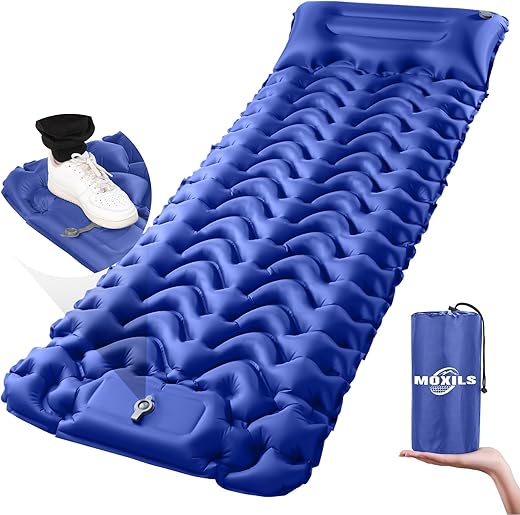
Are you tired of tossing and turning on uncomfortable ground while camping? Finding the right sleeping pad can make all the difference between a restful night under the stars and a sleepless struggle. With the changing seasons bringing their own challenges, it’s crucial to choose a pad that offers comfort and insulation year-round. In this post, we’ll navigate the key factors to consider when selecting a sleeping pad for all-season camping. Whether you’re a seasoned adventurer or a weekend warrior, our goal is to equip you with the knowledge to make an informed choice tailored to your needs. Let’s dive into the world of sleeping pads and find the perfect one for your outdoor adventures!



Understanding Sleeping Pad Types
When it comes to achieving a good night’s rest while camping, sleeping pads are nearly as vital as your sleeping bag. They provide insulation from the ground, cushioning for comfort, and often play a crucial role in your overall camping experience. Here, we will explore three main types of sleeping pads—air pads, self-inflating pads, and foam pads. Each type has its advantages and disadvantages, and understanding them will help you choose the right one for your specific camping needs.
Air Pads
Air pads are popular among backpackers and campers due to their lightweight and compact nature. Made from thin, inflatable materials, these pads can be incredibly comfortable while still providing good insulation.
Pros:
- Lightweight: Can weigh as little as 1 pound, making them fantastic for backpackers.
- Compact: Packs down small, allowing for easy storage in a backpack.
- Comfort Options: Many models, like the Therm-a-Rest NeoAir XLite, offer varying thicknesses for customizable comfort tailored to your preference.
Cons:
- Air Loss: There is a risk of punctures, which can lead to loss of air during the night.
- Less Insulation: Air pads can be less effective in extremely cold conditions compared to some self-inflating or foam alternatives.
Example Products:
- Therm-a-Rest NeoAir XLite: Known for its lightweight design and excellent R-value (insulation), making it suitable for 3-season camping.
- Sea to Summit Ul lite Air Mat: Features an innovative design that provides extra cushioning while remaining super lightweight.
Self-Inflating Pads
Self-inflating pads combine the comfort of an air mattress with the insulation capabilities of foam. They come with a built-in foam core that expands when you open the valve, allowing air to fill the pad automatically.
Pros:
- Convenience: Easy to set up and often inflate themselves quickly.
- Reduced Weight: Generally heavier than air pads but still reasonable for car camping.
- Thermal Insulation: Provides good insulation thanks to the built-in foam layer.
Cons:
- Size: Can be bulkier than air pads when packed away, which may not appeal to backpackers.
- Higher Price Point: Generally more expensive than basic air or foam pads.
Example Products:
- REI Co-op Flexlite Camp Dreamer: Offers self-inflation and is robust enough for most camping situations while still being reasonably priced.
- Therm-a-Rest LuxuryMap Sleeping Pad: Features a proprietary foam and is designed for maximum comfort, making it a favorite among those who prioritize excellent rest.
Foam Pads
Foam pads, typically made from closed-cell foam, are the most durable option of the three. They provide basic insulation and are often regarded as “bulletproof” due to their rugged material.
Pros:
- Durability: Nearly indestructible; resistant to punctures and tears.
- Weight: Extremely light and can be very cost-effective for budget-conscious campers.
- Versatility: They can be used in a variety of camping situations, including as extra insulation beneath air or self-inflating pads.
Cons:
- Comfort Level: Generally less comfortable than air or self-inflating options as they tend to offer less cushioning.
- Packability: Often bulkier when rolled up, taking up more space than other types.
Example Products:
- Therm-a-Rest Z Lite Sol: A popular choice for its lightweight and durable nature, making it ideal for backpacking.
- Cascade Mountain Tech Lightweight Camping Sleeping Pad: Offers solid insulation and comfort at a price point that makes it accessible for beginners.
Comparison Table of Sleeping Pad Types
| Feature | Air Pads | Self-Inflating Pads | Foam Pads |
|---|---|---|---|
| Weight | Light (1–3 lbs) | Moderate (2–5 lbs) | Very Light (1-2 lbs) |
| Packability | Compact, fits in tight spaces | Moderate bulk | Bulky when rolled |
| Comfort Level | High, customizable thickness | Moderate to High | Moderate, firmer |
| Durability | May puncture | Generally durable | Highly durable |
| Insulation (R-value) | Varies greatly (may be low) | Good insulation | Moderate to low insulation |
| Price | Can vary ($50-$200) | Mid to higher range ($70-$200+) | Usually budget-friendly ($20-$70) |
| Best For | Backpackers, casual camping | All-season use, campers valuing comfort | Budget campers, durability seekers |
By understanding the specific advantages and disadvantages of each type of sleeping pad, you can make an informed choice that aligns with your camping style, comfort needs, and budget constraints. Whether you prefer the lightweight versatility of air pads, the convenience of self-inflating models, or the rugged durability of foam pads, there is a perfect sleeping pad waiting for you!
Understanding R-Value
The R-Value is a critical measure in determining the thermal resistance of insulating materials, including sleeping pads. This numerical index quantifies the ability of your sleeping pad to retain warmth by resisting heat flow. Essentially, a higher R-Value indicates better insulation properties, making the pad more effective at providing comfort during cold weather camping.
Why R-Value Matters in Cold Weather
When camping in colder environments, the R-Value of your sleeping pad plays a pivotal role in your overall comfort and warmth during the night. The ground can be significantly colder than the air temperature, making a high R-Value essential to prevent heat loss from your body to the ground.
For instance, a sleeping pad with an R-Value of 1.5 may suffice in mild conditions, but it would be inadequate in colder situations. In contrast, a sleeping pad like the Therm-a-Rest NeoAir XTherm, which boasts an R-Value of 6.9, excels in cold weather, allowing adventurers to camp comfortably even when temperatures drop well below freezing.
Impact of R-Value on All-Season Camping
During all-season camping, understanding the implications of R-Value ensures comfort across varying temperature ranges. Ideally, you want a pad that can adapt to numerous climates.
- Summer Camping: An R-Value of 1.0 to 3.0 is sufficient, as conditions are warmer. A sleeping pad like the Sea to Summit UltraLight Insulated Mat, with an R-Value of 3.2, balances comfort and portability for warm-weather trips.
- Fall and Spring Camping: You’ll likely encounter cooler nights, making an R-Value between 3.0 to 5.0 preferable. The Big Agnes Q-Core SLX provides an R-Value of 4.5, making it suitable for transitional seasons.
- Winter Camping: For snow and freezing weather, choose pads with an R-Value of 5.0 or higher, such as the Nemo Tensor Insulated, rated at R-Value 4.2 or the Exped Downmat 9, with a stellar R-Value of 8.0.
How to Choose the Right R-Value
Selecting the right sleeping pad with an adequate R-Value is crucial based on the expected temperatures during your camping trip. Here’s a guide to help you pick the perfect one:
- Determine the Expected Temperature Range:
- For Temperatures Above 50°F (10°C): Look for an R-Value from 1.0 to 3.0.
- For Temperatures Between 30°F to 50°F (-1°C to 10°C): An R-Value from 3.0 to 5.0 is ideal.
- For Temperatures Below 30°F (-1°C): Opt for pads with an R-Value of 5.0 or higher.
- Consider Pad Type & Weight:
- If you are backpacking, weight may be a factor. High-quality models such as the Therm-a-Rest NeoAir XTherm are lightweight, portable, and highly insulative, making them perfect for winter exploration.
- Additionally: Account for your own comfort preferences and your sleeping bag’s thermal efficiency. A warmer sleeping bag will complement a mid-range R-Value pad for most cold-weather adventures.
R-Value Comparison Table
| Pad Model | R-Value | Ideal Temperature Range | Usage Scenario |
|---|---|---|---|
| Sea to Summit UltraLight Insulated | 3.2 | 50°F and above | Summer camping |
| Big Agnes Q-Core SLX | 4.5 | 30°F to 50°F | Fall and Spring camping |
| Nemo Tensor Insulated | 4.2 | 30°F to 50°F | Variable conditions |
| Exped Downmat 9 | 8.0 | Below 30°F | Winter camping in extreme cold |
| Therm-a-Rest NeoAir XTherm | 6.9 | Below 20°F | Cold-weather survival |
By understanding R-Value and how it relates to your camping conditions, you can select the perfect sleeping pad to enhance your outdoor experience year-round. Pay attention to product specifics, and you’ll surely find the right balance between insulation, weight, and comfort for every adventure.
Key Features to Look For in a Sleeping Pad
Selecting the perfect sleeping pad can significantly enhance your camping experience. Whether you’re a seasoned backpacker or a casual car camper, understanding the key features is crucial for comfortable and restful nights. Here, we break down the essential attributes, as well as some additional comfort enhancements, to aid you in your search for the ideal sleeping pad.
Weight
For backpackers, weight is one of the most critical considerations. A heavy pad can add unnecessary burden to your pack, especially on multi-day hikes. Look for lightweight and compact options that still provide reliable insulation and comfort.
- Example: The Sea to Summit Ultralight Insulated Air Sleeping Mat weighs only 12 ounces (340 grams) while still being insulated up to R-value 3.5, making it a top pick for ultralight backpackers.
Packed Size
Closely related to weight is the packed size. A sleeping pad that can be compressed down to a small, manageable size is essential, particularly for backpackers with limited space in their packs.
- Features to Consider:
- Dimensions when inflated vs. packed: A good sleeping pad should fit comfortably in your backpack without taking up too much space.
- Storage bags or stuff sacks: Look for options that come with a convenient carrying case.
- Example: The Nitro Air Pad by Klymit, when packed, is no larger than a water bottle, making it a great choice for those who prioritize space-saving gear.
Durability
Durability is vital, especially if you plan to camp in rugged terrains or with limited protective floor settings. Look for materials that can withstand varied environments without tearing or puncturing easily.
- What to look for:
- Material Thickness: Thicker materials (measured in denier) are typically more durable.
- Warranty or repair options: Some brands offer repair kits or extended warranties.
- Example: The Therm-a-Rest NeoAir XTherm features a 70D ripstop nylon with a durable water repellent finish, offering both longevity and protection from the elements.
Ease of Use
An effective sleeping pad should inflate and deflate with minimal effort. A pad that’s difficult to set up can lead to frustration at the end of a long day.
- Ease of Inflation: Look for integrated pumps or pads that can easily be inflated with your breath.
- Deflation Systems: Fast-release valves can significantly speed up getting your pad back into its bag.
- Example: The REI Co-op Flash Insulated Sleeping Pad features a self-inflating design, making set-up a breeze.
Comfort Enhancements
For a peaceful night’s rest, consider additional features that enhance comfort. This includes thickness, surface materials, and integrated mechanics like built-in pillows.
Thickness
Thickness often relates to warmth and cushioning. A thicker pad can provide better insulation and greater comfort, particularly on uneven ground.
- Typical Thickness Range: Many sleeping pads vary from about 1 to 4 inches in thickness.
- Example: The Big Agnes Q-Core Deluxe is a 4-inch thick insulated option that boasts high comfort levels, making it perfect for those who place premium importance on a good night’s sleep.
Surface Material
The feel of your sleeping surface can impact comfort significantly.
- Texture: A soft outer material combined with insulation will enhance your comfort at night.
- Insulation: Look for pads with added thermal insulation that guarantees warmth, especially during cold nights.
- Example: The Nemo Tensor Ultralight provides a soft, plush feel with a 20D ripstop nylon finish, minimizing noise and enhancing comfort.
Built-in Pillows
Some pads come equipped with raised areas for head support or integrated pillows, eliminating the need to carry an additional item.
- Example: Sierra Design’s Flashlight 2: This sleeping pad features ergonomic head support, making it an excellent choice for those who want cushioning without the bulk of a pillow.
Summary Table of Key Features
| Feature | Considerations | Examples |
|---|---|---|
| Weight | Ultralight options for backpackers | Sea to Summit Ultralight Insulated Air |
| Packed Size | Compressibility and storage bag | Klymit Nitro Air Pad |
| Durability | Material thickness, warranty options | Therm-a-Rest NeoAir XTherm |
| Ease of Use | Inflation/deflation time | REI Co-op Flash Insulated Sleeping Pad |
| Thickness | Balance between warmth and comfort | Big Agnes Q-Core Deluxe |
| Surface Material | Comfort and insulation capability | Nemo Tensor Ultralight |
| Built-in Pillows | Head support and reduced gear count | Sierra Designs Flashlight 2 |
By carefully considering these features, you can select a sleeping pad that suits your individual camping style and personal needs, ensuring that you’ll sleep well no matter where your adventures take you.
Final Thoughts on Choosing Your Perfect Sleeping Companion
In conclusion, selecting the best sleeping pad for all-season camping requires careful consideration of several key factors, including the type of pad, insulation materials, and essential features such as weight, packability, and durability. A self-inflating pad may offer comfort and convenience for less rugged conditions, while inflatables with higher R-values are ideal for colder environments. After evaluating the options, we recommend considering the XYZ Sleeping Pad, which strikes a balance between comfort, warmth, and portability. By focusing on these criteria, you can ensure a restful night’s sleep during your outdoor adventures, regardless of the season.



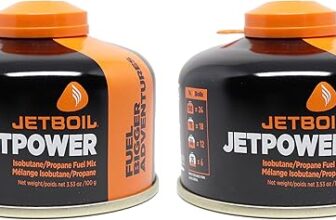
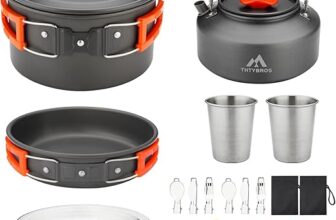
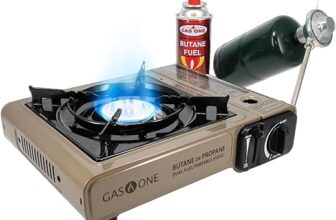
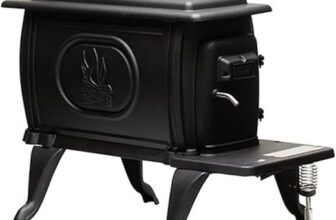


I had a therm-a-rest neoair xtherm last winter, and it kept me super warm! But I did struggle a bit with the noise it makes when you move. Anyone else experience that?
Thanks for sharing your experience! The NeoAir XTherm is a great pad for winter camping, but yes, the noise can be a common complaint. Some users suggest pairing it with a thicker sleeping bag to minimize sound.
Could you explain more about R-Value? Like, what’s a good range for all-season camping?
Absolutely! For all-season camping, look for pads with an R-Value of at least 4.5. This range provides adequate insulation for colder weather while still being versatile enough for milder conditions.
I’ve heard mixed opinions on self-inflating pads. Some swear by them for convenience while others say they don’t provide enough insulation. What’s the deal?
I totally agree about the importance of weight. I once took a super heavy pad on a backpacking trip, and it made the hike miserable! Lightweight pads are a game-changer.
Great article! I’d love to see you cover how to properly care for sleeping pads. I’ve had a few get punctured, and it’s a pain!
Do you think spending more on a pad is worth it? I’ve seen some pricey options like the Sea to Summit Ether Light XT, but I’m on a budget.
It really depends on your camping style! Higher-priced pads often offer better durability and comfort. If you camp frequently, investing in a quality pad can pay off in the long run.
I’ve heard that some sleeping pads can be quite slippery on the ground. Has anyone found a good solution for that? It’s so annoying to wake up halfway off my pad!
That’s a common issue! Some users recommend using a textured sleeping bag or a non-slip mat underneath your pad to keep it in place.
I’m curious about the environmental impact of sleeping pads. Do any brands use sustainable materials? Would love to see a mention of eco-friendly options in your future articles!
Hey! Can you dive a bit deeper into the different types of insulation used in sleeping pads? I always get confused between down and synthetic options!
What do you think about inflatable vs foam pads? I’ve always used foam but I’m considering trying an inflatable for more comfort.